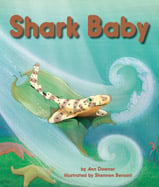Alignment to Standards for TX

| Grade | Number | Standard |
|---|---|---|
| 1 | 112.12 (b) (10) (D) | observe and record life cycles of animals such as a chicken, frog, or fish. |
| 1 | 112.12 (b) (9) | the living environment is composed of relationships between organisms and the life cycles that occur. |
| 1 | 112.12 (b) (9) (C) | interdependence among living organisms such as energy transfer through food chains and animals using plants for shelter. |
| 1 | 113.3. (1.6) (A) | physical characteristics of places such as landforms, bodies of water, natural resources, and weather; |
| 2 | 112.13. (b) (10) (A) | compare how the physical characteristics and behaviors of animals help them meet their basic needs such as fins help fish move and balance in the water |
| 2 | 112.13. (b) (9) (C) | ways living organisms depend on each other and on their environments such as food chains |
| 3 | 112.14. (b) (10) | organisms undergo similar life processes and have structures that help them survive within their environments. |
| 3 | 112.14. (b) (10) (A) | explore how structures and functions of plants and animals allow them to survive in a particular environment |
| 3 | 112.14. (b) (10) (C) | how animals and plants undergo a series of orderly changes in their diverse life cycles such as tomato plants, frogs, and lady bugs. |
| 3 | 112.14. (b) (9) | organisms have characteristics that help them survive and can describe patterns, cycles, systems, and relationships within the environments. |
| 4 | 112.15. (b) (10) | organisms undergo similar life processes and have structures that help them survive within their environment. |
| 4 | 112.15. (b) (10) (C) | explore, illustrate, and compare life cycles in living organisms such as butterflies, beetles, radishes, or lima beans. |
| 5 | 112.16. (b) (10) | organisms undergo similar life processes and have structures that help them survive within their environments. |